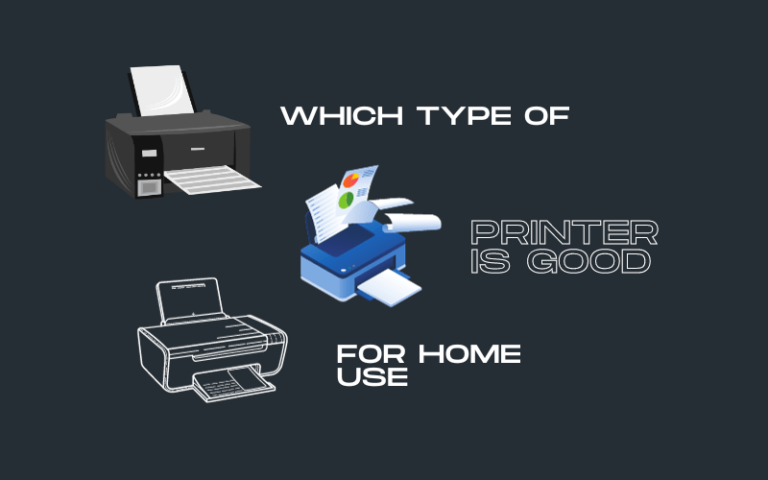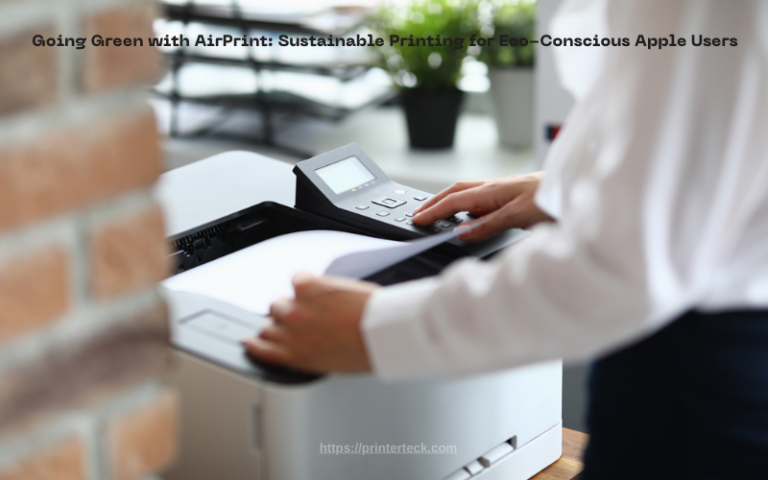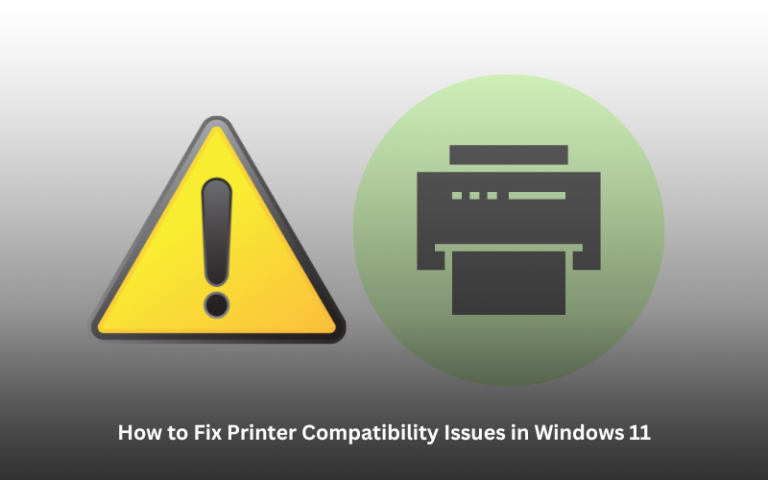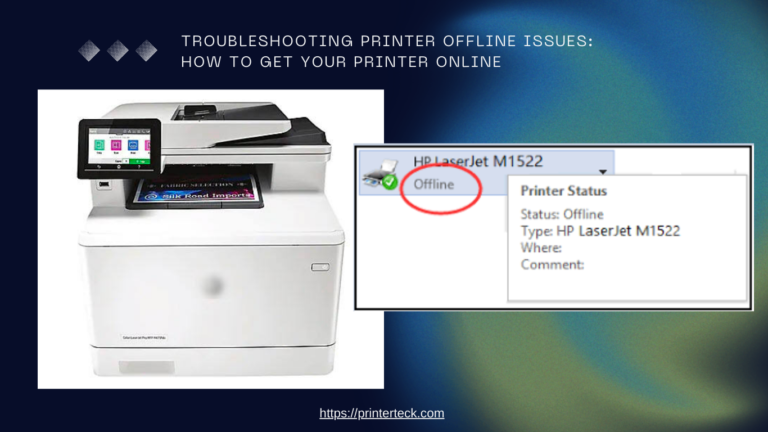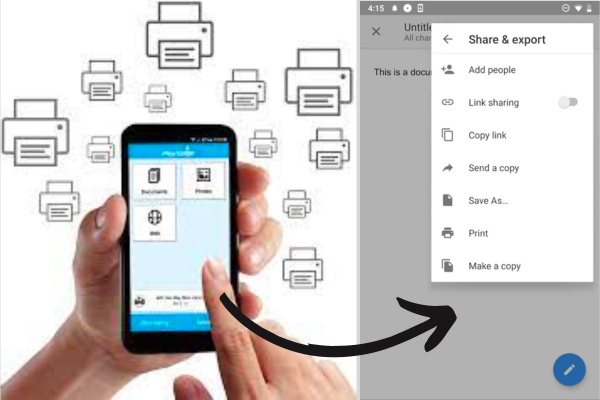Choose the Right Printer Wisely
Selecting the right printer is more than just a choice between black and white or color. It’s a strategic decision that can impact your budget, productivity, and print quality for years. At the core of this decision lies a fundamental question: Inkjet or Laser?
Each technology has unique strengths. Inkjet printers are known for their vibrant color reproduction and photo capabilities. Laser printers, on the other hand, are hailed for their speed, efficiency, and crisp text. Understanding the differences, pros, cons, and ideal use cases for both can help you avoid overpaying—or underperforming.
Quick Navigations
- 1 1. Understanding How Inkjet and Laser Printers Work
- 2 2. Print Quality Comparison: Text vs. Images
- 3 3. Speed and Efficiency: Which Is Faster?
- 4 4. Cost Breakdown: Upfront vs. Long-Term
- 5 5. Reliability and Maintenance Needs
- 6 6. Size, Design, and Footprint
- 7 7. Ink and Toner: Differences in Composition and Storage
- 8 8. Wireless and Smart Printing Features
- 9 9. Best Use Cases: Which Printer Fits Your Needs?
- 10 10. Environmental Impact: Inkjet vs. Laser
- 11 11. Leading Inkjet and Laser Printer Models (2025)
- 12 Conclusion: The Verdict – Inkjet or Laser?
1. Understanding How Inkjet and Laser Printers Work
Inkjet Technology: Liquid Precision
Inkjet printers work by spraying microscopic droplets of ink directly onto paper. Using either thermal bubble or piezoelectric printheads, they build up color and detail layer by layer.
Key Characteristics:
- Uses liquid ink in cartridges (dye-based or pigment-based)
- Ideal for high-resolution color and photos
- Slower due to droplet drying time
Laser Technology: Toner and Heat
Laser printers use static electricity and a heated drum to fuse powdered toner onto the page. This process is exceptionally fast and consistent.
Key Characteristics:
- Uses toner powder, not ink
- Best for sharp text and high-volume printing
- Output is dry and ready instantly
2. Print Quality Comparison: Text vs. Images
Inkjet for Vibrant Color and Detail
- Superior color blending and shading
- Borderless printing for photos and designs
- Rich tones, better for glossy paper
Laser for Crisp Text and Line Clarity
- Sharper lines and text, even at small sizes
- No smudging or bleeding
- Ideal for professional documents and forms
| Print Type | Inkjet | Laser |
|---|---|---|
| Text Documents | Good | Excellent |
| High-Res Photos | Excellent | Poor |
| Charts/Graphics | Very Good | Good |
| Water Resistance | Lower | Higher |
3. Speed and Efficiency: Which Is Faster?
When it comes to speed, laser printers take the lead.
Laser Printers
- Average speed: 20–40 ppm (pages per minute)
- Instant-on technology = no warm-up delays
- Better suited for offices and bulk printing
Inkjet Printers
- Average speed: 5–15 ppm
- May pause between pages for drying
- Best for casual or creative users
Tip: High-end inkjet models with dual trays and faster drying ink can compete with entry-level lasers.
4. Cost Breakdown: Upfront vs. Long-Term
Buying a printer is one cost. Maintaining it is another.
Initial Costs
| Printer Type | Average Price Range |
|---|---|
| Inkjet | $50 – $200 |
| Laser | $100 – $500 (Monochrome); $250+ (Color) |
Ink vs. Toner Replacement Costs
| Metric | Inkjet | Laser |
|---|---|---|
| Cartridge Cost | $15–$40 | $50–$150 |
| Page Yield | 100–300 pages | 1,000–5,000 pages |
| Cost per Page | $0.15 – $0.30 | $0.03 – $0.10 |
Verdict: Inkjets are cheaper upfront but more expensive over time. Lasers offer lower cost-per-page, especially for high-volume users.
5. Reliability and Maintenance Needs
Inkjet Printers: Maintenance Required
- Cartridges can dry out if unused for weeks
- Printhead clogs are common
- Frequent cleaning cycles waste ink
Laser Printers: Low Maintenance
- Toner does not dry out
- Fewer moving parts = longer lifespan
- Require less frequent intervention
Best For: Environments with steady or sporadic print needs.
6. Size, Design, and Footprint
Inkjet Printers
- Compact and lightweight
- Great for dorms, home offices, or tight spaces
- Available in all-in-one (AIO) form for scanning and copying
Laser Printers
- Typically larger and heavier
- Business-grade models can be bulky
- More common in shared workspaces or office setups
| Feature | Inkjet | Laser |
|---|---|---|
| Desk Compatibility | High | Medium |
| Portability | Excellent | Fair |
| Multifunction Options | Widely available | Often optional |
7. Ink and Toner: Differences in Composition and Storage
Inkjet Ink
- Liquid-based, usually dye or pigment
- Shorter shelf life
- Must be stored upright and in controlled temperatures
Laser Toner
- Dry powder, longer shelf life
- Easier to store, less prone to leakage
- Unused toner can last years in sealed packaging
Storage Tip: Avoid heat and humidity for both types to maintain cartridge quality.
8. Wireless and Smart Printing Features
Modern printers include cloud features, app controls, and smart integrations.
Inkjet Smart Features
- AirPrint, Google Cloud Print (legacy), HP Smart
- Ideal for photo editing apps
- Built-in memory card readers
Laser Smart Features
- Enterprise-level print management
- Mobile and cloud connectivity
- Secure document printing with PIN access
Both technologies now support:
- Wi-Fi Direct
- Voice Assistant Integration (Alexa, Google Assistant)
- Duplex Printing
- App-Based Setup
9. Best Use Cases: Which Printer Fits Your Needs?
| User Type | Recommended Printer | Reason |
|---|---|---|
| Home User (light use) | Inkjet | Compact, affordable |
| Photographer | Inkjet | Rich color depth |
| Office Worker | Laser | Fast, high-volume |
| Student | Inkjet | Cheap and versatile |
| Shared Office | Laser | Reliable for teams |
| Creative Business | Inkjet (Pro model) | Fine art/photo printing |
| Legal/Finance | Laser (Monochrome) | Fast, precise text output |
10. Environmental Impact: Inkjet vs. Laser
Inkjet
- More frequent cartridge replacements
- Often less energy-efficient
- Many brands offer cartridge recycling programs
Laser
- Higher energy use due to heat in fusing process
- Toner cartridges have larger yields, reducing waste
- Some models include eco-modes and toner-saving settings
Eco-Friendly Suggestions:
- Choose Energy Star certified models
- Recycle cartridges through programs like HP Planet Partners or TerraCycle
- Use refilled or remanufactured supplies where compatible
11. Leading Inkjet and Laser Printer Models (2025)
| Model | Type | Ideal For | Key Features |
|---|---|---|---|
| HP ENVY Inspire 7955e | Inkjet AIO | Home/Students | Photo + document printing |
| Canon PIXMA G620 | Inkjet | Photos | Refillable ink tanks, low CPP |
| Epson EcoTank ET-2850 | Inkjet | Families | High yield, no cartridges |
| Brother HL-L2350DW | Laser Mono | Office | Fast & compact, Wi-Fi |
| HP Color LaserJet Pro MFP M479fdw | Laser Color | Businesses | Duplex, fax, touchscreen |
| Canon imageCLASS LBP622Cdw | Laser Color | Workgroups | Color + mobile printing |
Conclusion: The Verdict – Inkjet or Laser?
The right printer isn’t about what’s best overall—it’s about what’s best for you. Inkjet printers shine in creative applications and vibrant imagery, while laser printers dominate when speed, efficiency, and text clarity are essential.
Make your decision based on:
- Your print volume
- Types of documents or images
- Long-term vs. upfront cost
- Available space and features
Whichever you choose, understanding the core differences ensures a smart purchase that matches your needs and maximizes your printing potential.


